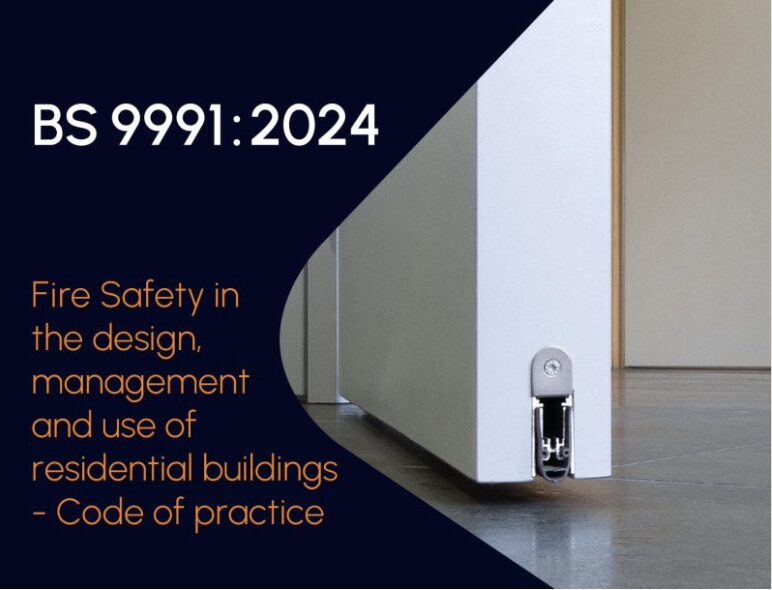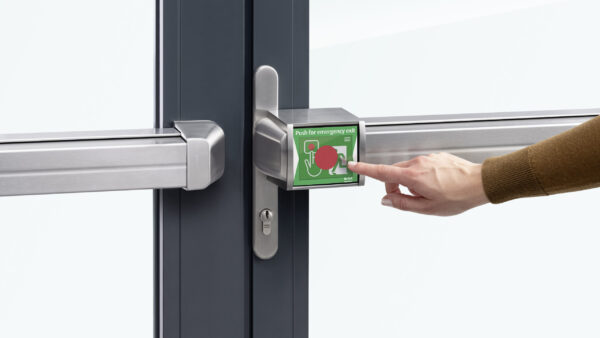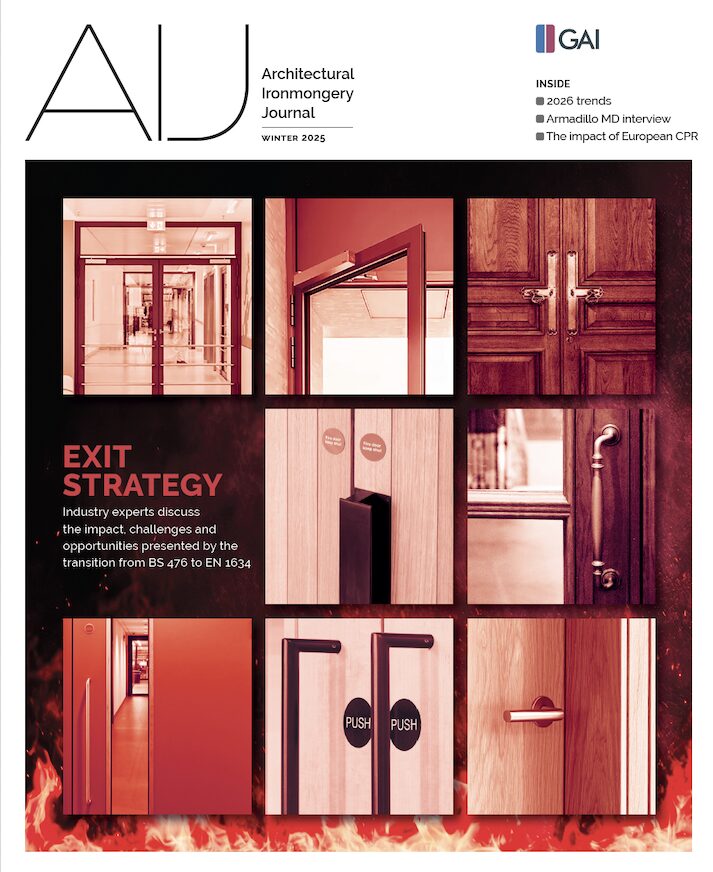Michael Spoors managing director at Norseal on recent changes to BS9991 – the British Standard for fire safety in residential buildings – and the testing of fire doors and the requirements for bottom edge seals.
There’s been some confusion around the 2024 changes to BS 9991 and what they mean for smoke seals on fire doors. The new standard doesn’t radically change what must be fitted but does sharpen the focus on how fire doors with smoke resistance are tested and how that testing should reflect real-world performance. Most notably, it confirms that for smoke-resisting doors, smoke leakage must be controlled across all four sides of the door, and that includes the threshold.
This is a welcome step forward for those of us who’ve long championed the benefits of threshold seals. It reinforces what we already know: that leaving an unsealed gap at the bottom of a fire door undermines the smoke resistance of the door and compromises safety.

So what do the changes to the standard mean for specification, and why is it essential to treat threshold sealing as standard practice?
BS 9991 is the British Standard for fire safety in residential buildings. It covers a wide range of safety measures, including escape routes, fire alarms, compartmentation, and firefighting access. First published in 2011, it was significantly updated in November 2024 to reflect modern thinking on fire and smoke protection. While the standard applies to both new and existing residential buildings, the recent changes to the standard have specific implications for how smoke-resisting doors are designed and tested.
The pertinent part of the 2024 version of the standard is Clause 30.1.6 of BS 9991:2024, which sets out the new expectation for smoke seals: "Fire doors that need to resist the passage of smoke at ambient temperature conditions, i.e. fire doors having the suffix ‘Sa4’ (BS EN 13501-2:2023) or ‘S’ (BS 476-31.1)… should either: a) meet the BS EN 13501-2:2023 classification of Sa4; or b) have a leakage rate not exceeding 3 m3/h/m, when tested in accordance with BS 476-31.1."
In short, if you specify Sa4 or FD30S doors, those doors must now be tested for smoke leakage around the entire perimeter, including the threshold. This reflects a more realistic approach to smoke control and helps ensure that what’s tested performs properly in a real building.
Until recently, standard testing practices allowed the threshold to be simply taped over, potentially masking a critical weak spot in the door in real-life conditions. Research from IFSA (Intumescent Fire Seals Association) shows that a door with a 3mm unsealed threshold leaks over ten times more smoke than one with a properly fitted drop seal.
Sealing the bottom edge is now essential for doorsets that are expected to provide ambient smoke protection. The updated guidance aligns with BS EN 13501-2’s Sa4 classification, which explicitly tests all four edges of the door.
For architectural ironmongers and door set manufacturers, this guidance reinforces what many are already doing but brings added clarity and consistency:
- Test with the seal you intend to install: Threshold seals must now be present during testing. Taping the gap is no longer considered an acceptable way to demonstrate compliance.
- Specify threshold solutions as standard for Sa4 and FD30S: Automatic drop seals are a practical and effective way to meet the performance criteria without affecting the door’s usability.
- Expect tighter scrutiny of test evidence: Test results must show compliance around all four sides of the door.
Going forward, the best practice will be to make four-sided sealing the default approach for any doors offering smoke protection. Not only does this meet the updated expectations, but it also delivers better, safer performance.
Choose proven seals tested to the latest standards and help deliver compliant, reliable solutions. And work from clear test data that proves that your chosen door set, and seal combination has been tested together under the correct standard.
The 2024 BS 9991 update doesn’t just adjust test protocols; it reflects a shift in thinking. We now recognise that smoke control only works when all four sides of the door are effectively sealed. For manufacturers and specifiers, that’s a prompt to treat threshold sealing as essential, not optional. Whether specifying smoke-resisting doors or aiming for best practices in residential fire door performance, it’s time to make four-sided sealing the rule, not the exception.
www.norseal.co.uk








